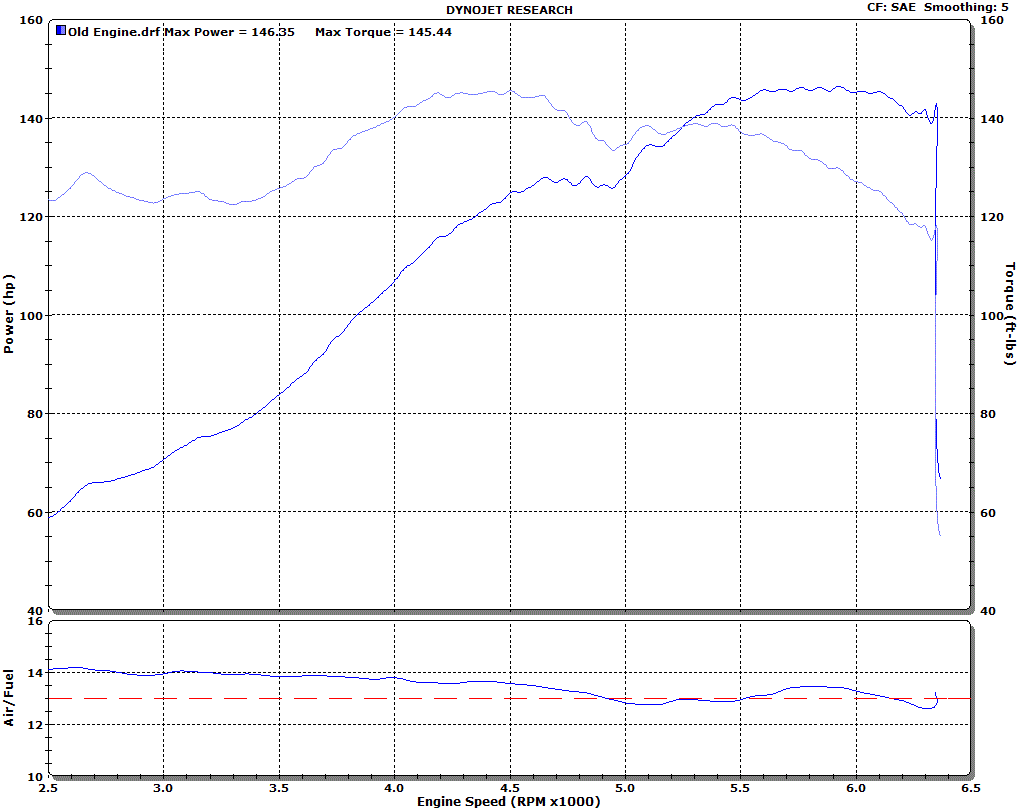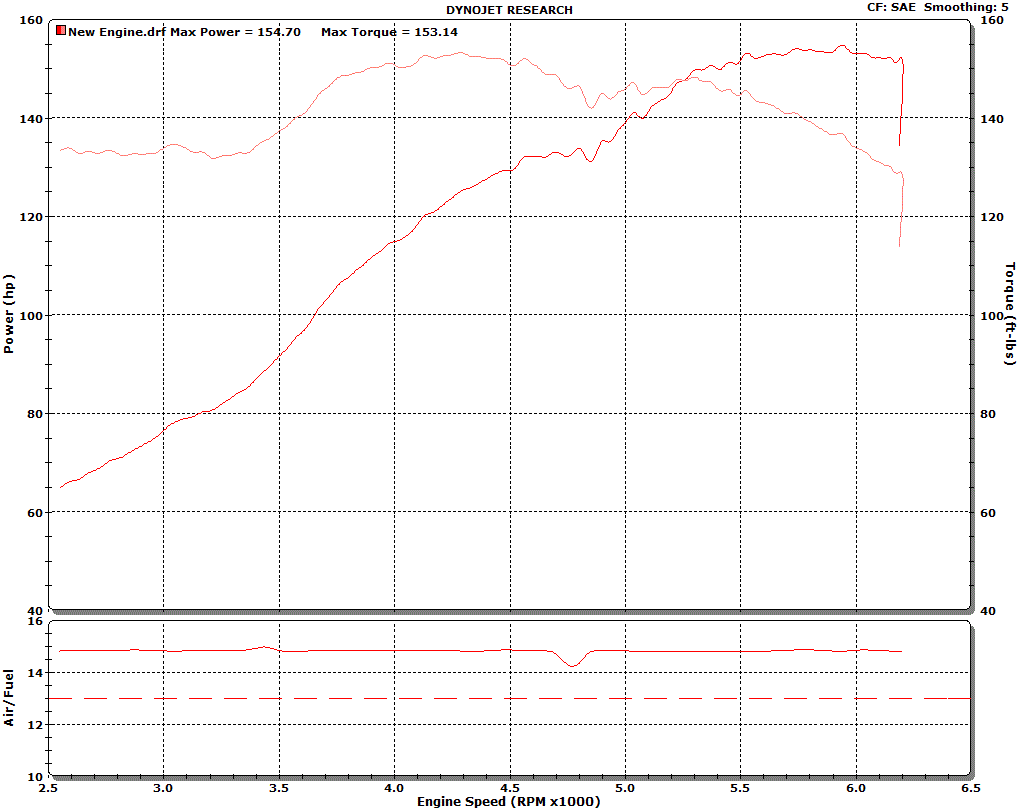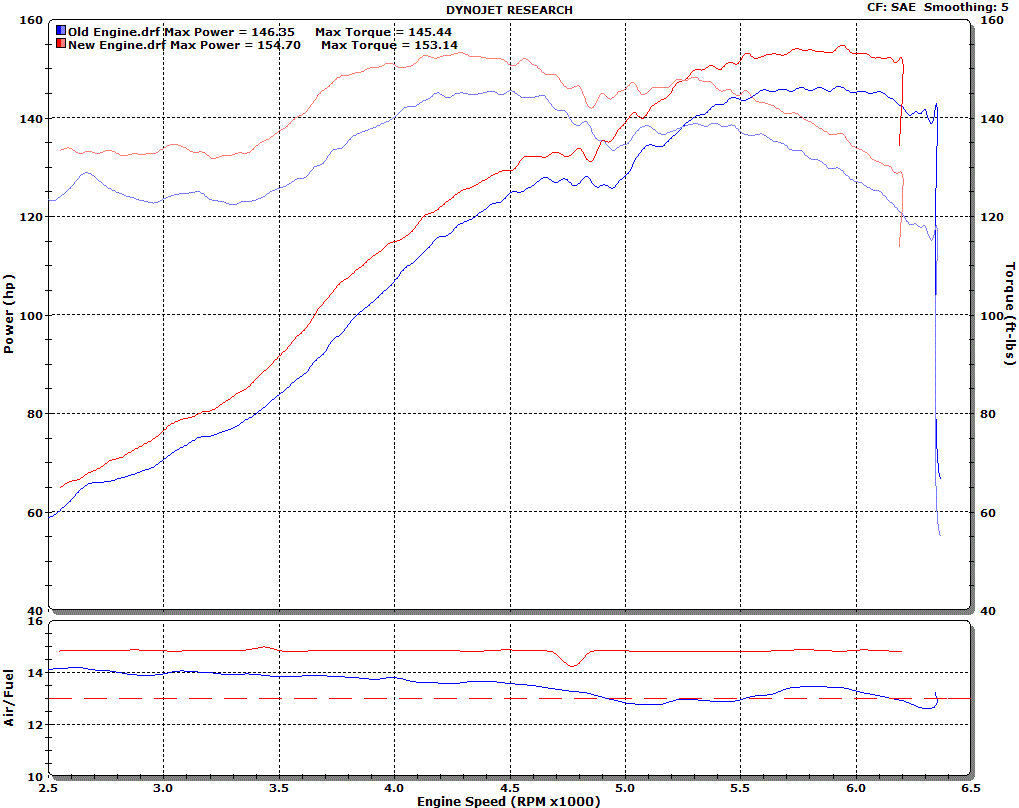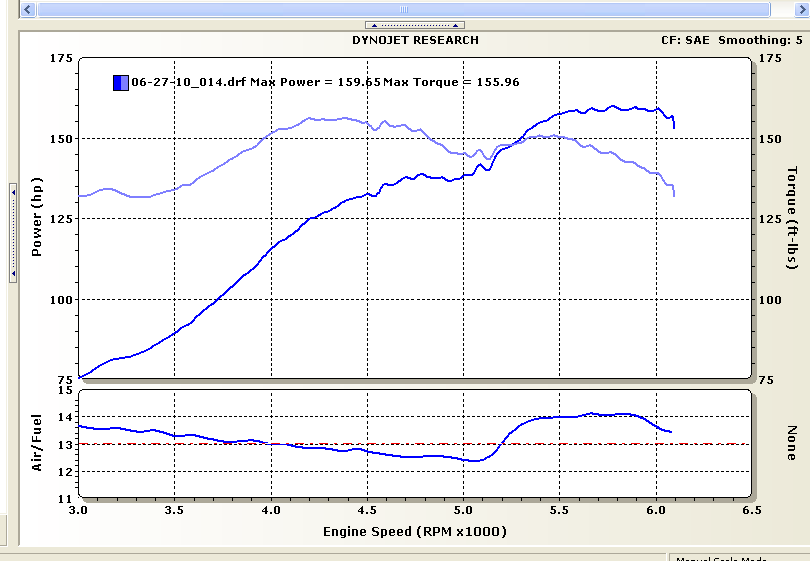[quote=“Ranger” post=73510]Your engine is running too lean. Something is wrong with engine management. Compare the A/F to the plot below. I don’t know what the best acheivable A/F for us looks like but I can give a ballpark. Stating the obvious, it’s hard to control our A/F, but I think the objective should be to spend as much time around 13 as possible. The engine will always go rich between 4500 and 5200 because, so the unconfirmed lore goes, the DME is dialing back timing to avoid engine knock.
The engine in my dyno chart below was a fresh build by Chuck Baader. New .020 over pistons, new cam, and new spark plugs. With my old engine management parts we got a little over 150hp. By replacing a lot of engine management parts we got to the below chart as our best of the day of prob 15runs. Only later did I understand that long term fuel trim will defeat this idea of swapping out parts and comparing dyno runs.
I ran this engine starting Aug10 until I came home with my two Metric Mechanic bottom ends 5 months later. Altho the MM bottom ends were not .020 over I was curious as to how they would do (and bored) so I pulled Chuck’s motor and replaced it with an MM motor. Chuck’s bottom end is now a spare.
If I was still obsessed with engine performance I’d try to find a way to get the mixture a bit more rich in the upper rpm. I have an A/F meter on my dash and this is a comfort. I check it every once and now while on the track to make sure that nothing is crazy.[/quote]
There was no Air Fuel hookup for my new engine run. That is why it is so flat and at 14.7:1. Theoretically we should want our AFR to be 13:1 the entire time, but the fact that we can’t tune our ECUs, it is doubtful anyone will achieve that. I have not changed out any sensor on my motor ever. I am using all the original sensors that came on my original motor, and that is probably why the two plots line up so closely minus the hp/torque delta of all the new parts in the engine.









